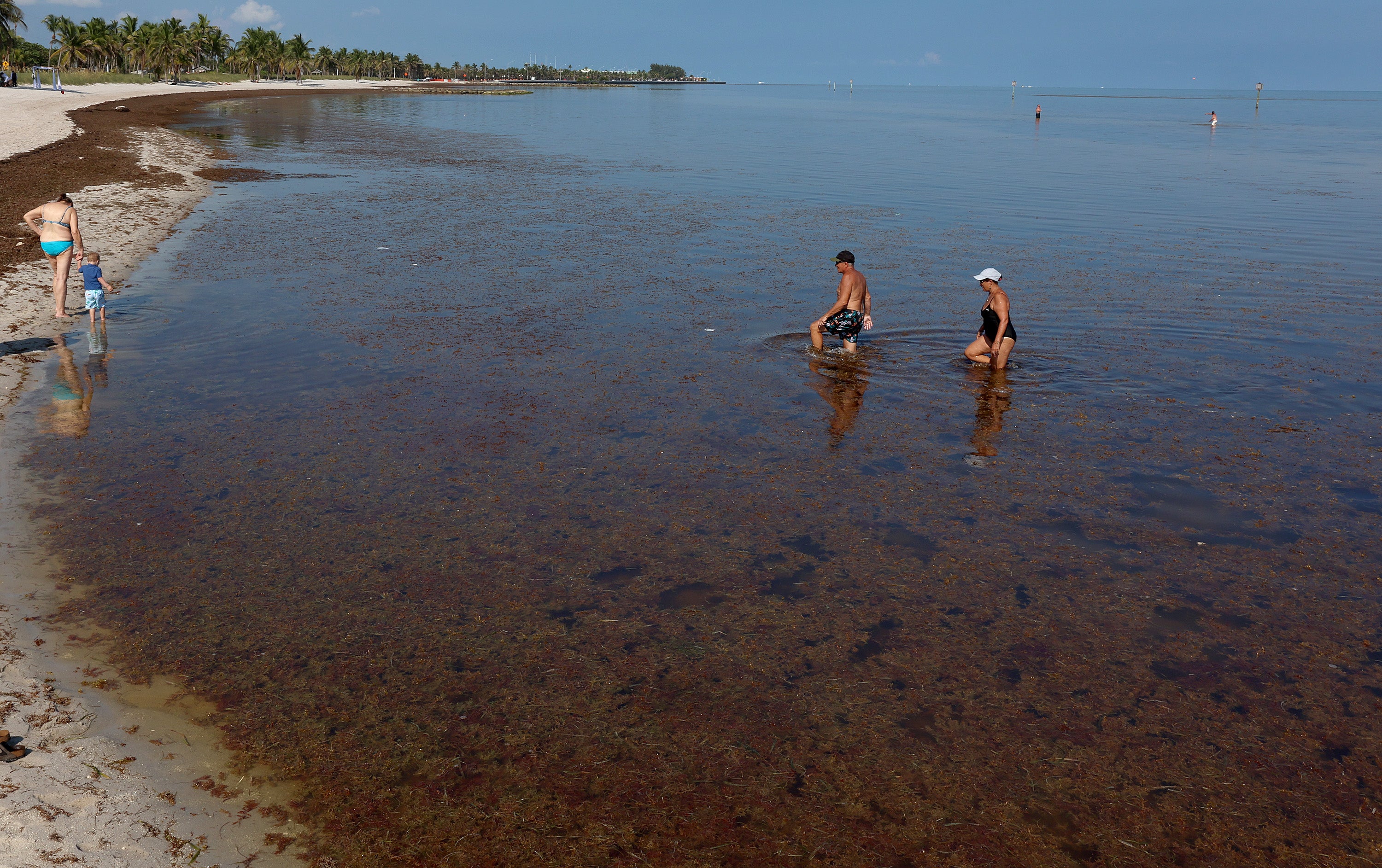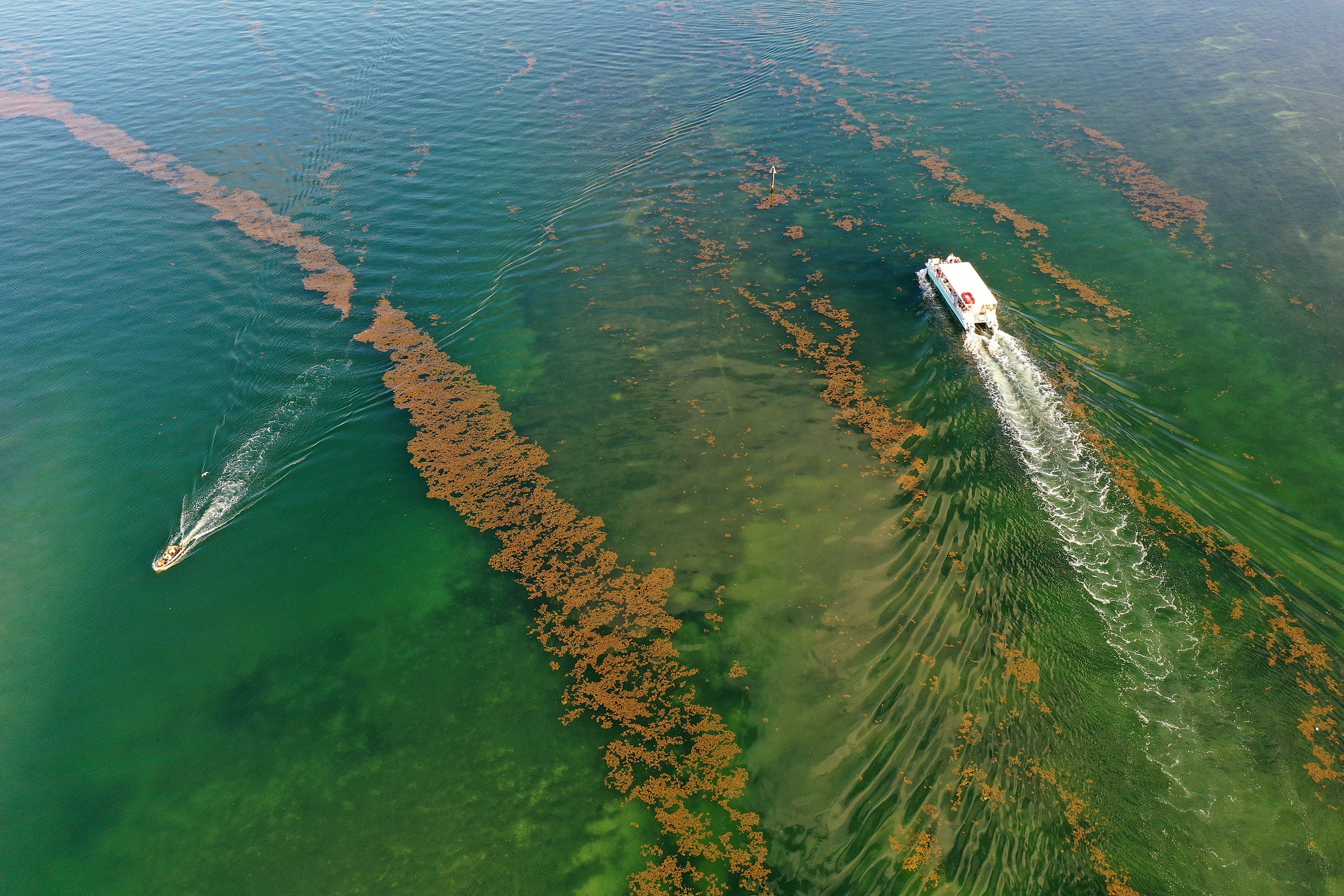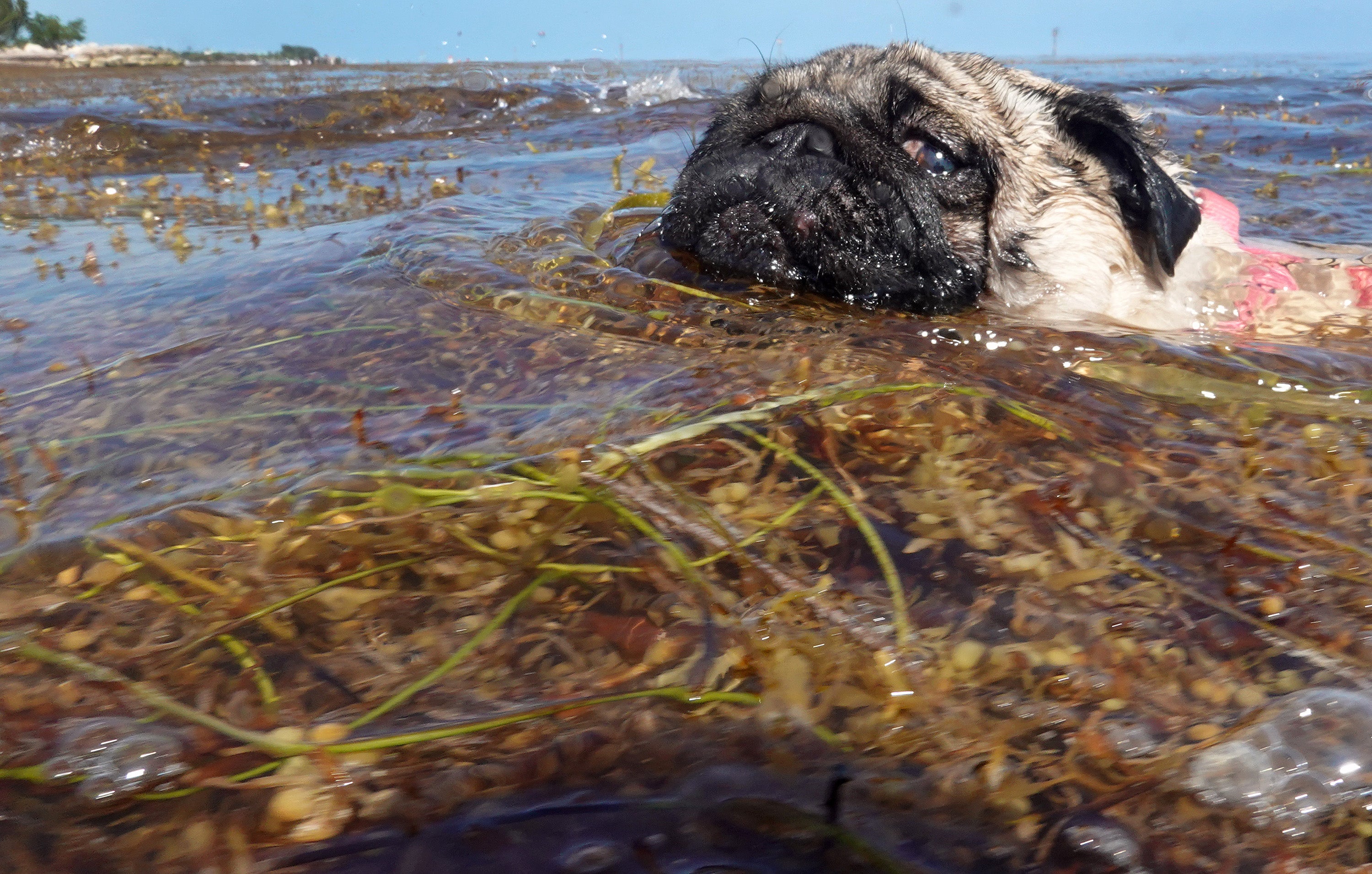ARTICLE AD BOX
Large and often smelly brownish-colored algae blobs are headed for South Florida shores once again. But this time, they’re even bigger.
In fact, the amount of sargassum seaweed aimed at Floridians increased last month, with amounts in the eastern Caribbean Sea and west Atlantic Ocean reaching “surprisingly high levels,” note scientists.
Researchers at the University of South Florida’s Optical Oceanography Lab said levels were 200 percent higher than their historical records in April in both areas, and the total amount in all regions combined was 150 percent higher.
“Furthermore, this total amount was 40 percent higher than the all-time high in June 2022, which makes 2025 a new record year,” they said.
So what does this mean for Floridians, the state’s ecosystems, and other inhabitants?

What is a sargassum bloom?
Sargassum blooms are massive accumulations of brown seaweed that originate in the Atlantic Ocean and float on the surface of the water. The seaweed provides habitat for crabs, shrimp, threatened sea turtles, and fish. They’re also filled with plastic.
Historically, most of it was located in the Sargasso Sea, but the geographic range for sargassum expanded in 2011. Now, massive amounts from the new 5,000-mile region called the “Great Atlantic Sargassum Belt” head west into the South Atlantic and Gulf of Mexico.
What’s causing the historic increase?
Researchers believe the beach-choking blooms are tied to strong ocean currents and wind that help to create ideal growing conditions for the algae. The nutrients that are necessary for multiple kinds of blooms were driven by the shifting winds. Winds and currents carry the seaweed around to Florida.
This year, scientists say that the exact reasons for the new historical records need to be investigated, although most were due to local growth and the seaweed’s movement.

“Over the last month, we saw somewhere around 31 million metric tons of sargassum, which is the highest amount we’ve ever recorded in this area and [it] would be the largest macroalgae bloom ever,” Dr. Brian Barnes told News 6.
Higher temperatures due to climate change may also be a factor, one scientist told The Miami Herald. But, another expert said hot water temperatures could hurt growth.
May is expected to see a continued increase in most regions. The typical peak is in the summer.
Why do we care about them?
Florida has spent millions of dollars on clean-up over the last few years. Tourism is adversely affected when beaches close.
But, there are also harmful health effects — for humans and animals.
Brown tides can smother coral reefs and disrupt nesting grounds for sea turtles.
Sargassum is not toxic unless it’s rotten. If it is, it releases a hydrogen sulfide gas that can irritate your eyes, nose and throat. People with prior respiratory conditions may have trouble breathing after inhaling it. Its smell is reminiscent of rotten eggs.

In addition to other contaminants, sargassum may contain high levels of heavy metals, including arsenic and cadmium.
To protect themselves and their families, people should avoid touching or swimming near the seaweed, close their windows and doors if they live near the beach, limit their time on the beach if they have respiratory issues, and use gloves to handle seaweed.
“Stay away from the beach if you experience irritation or breathing problems from hydrogen sulfide — at least until symptoms go away,” the Florida Fish and Wildlife Conservation Commission advises.









 English (US) ·
English (US) ·